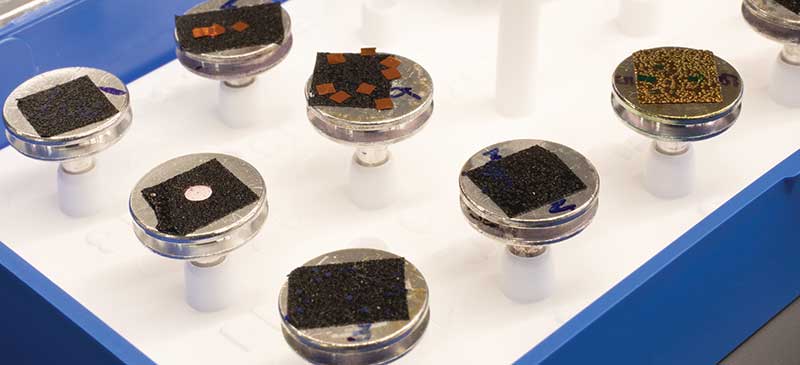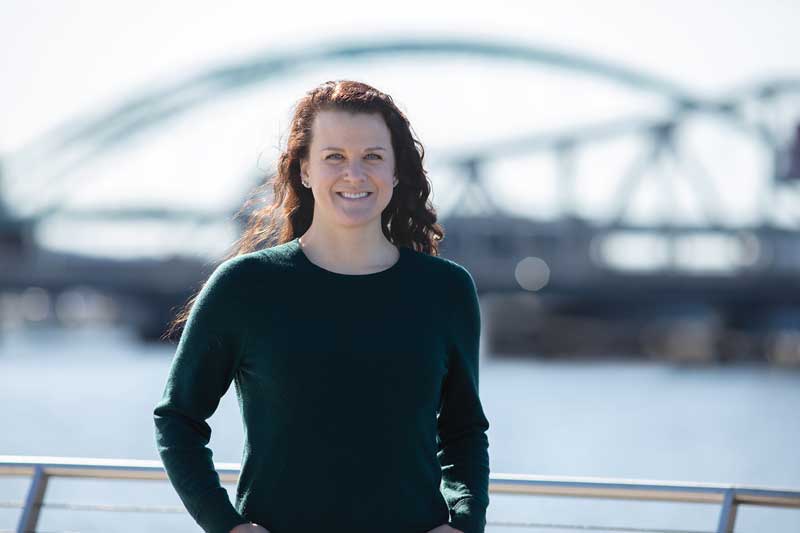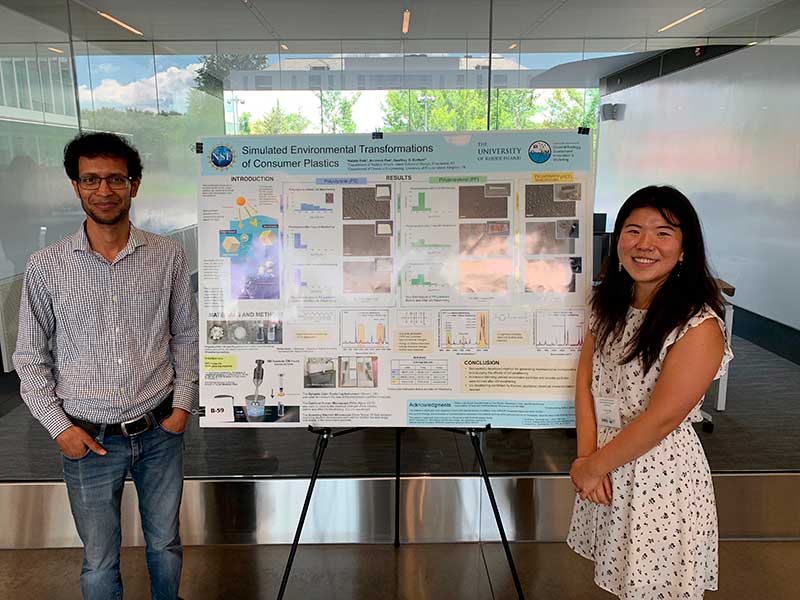She remembers how she felt as she absorbed the enormity of the situation: storm-size gyres of plastics debris swirling upon the world’s oceans. “Terrified,” says Izabela Ciesielska-Wrobel, an assistant professor of the URI College of Business specializing in Textiles, Fashion Merchandising and Design. “It broke my heart.”
So she dealt with it the only way she could – she decided that as a scientist, she needed to start working on a solution, via an area she knows like the back of her hand: textile technology and manufacturing. “I started to think of the plastics problem in terms of what I know, and that’s how it started for me,” says Ciesielska-Wrobel, whose academic career has focused her studies on knitting, weaving, spinning, and non-woven technologies.
A native of Poland, Ciesielska-Wrobel secured her Ph.D. in 2007 by studying how people’s bodies register different fabrics, documenting, for example, the effects that certain textiles can have on body temperature and movement ability. She spent an initial research stint in textile product development in the private sector in Virginia, and was able to achieve textile research funding from the U.S. Department of Energy and the Department of Defense.
She then arrived at URI, and started to pursue in depth her study of ocean plastics. At the core, she says, she felt that textiles technology could play an expanded role in solving this pressing pollution problem. “We already know how plastic PET bottles can be made into fabrics,” she says, “but what if we could use more of other kinds of plastics, and what if we could use these plastics to make other kinds of textiles, for many uses?”
One of her chief interests with this work – she wants to be able to transform plastic waste into filaments, then yarns material, and finally cloth – is to make a durable enough product that could be a base for longer lasting clothes and other household and business items. “We need to be thinking about sustainability,” she says. “We should be thinking about items that last, instead of items that are thrown away and cause more problems.”
But, she indicates, that something easier said than done, as business models today often reflect a dependence on throw-away products. “Wrap2Wear” is the name she has given her in-process technology textiles, and she spends time talking with other scientists, business experts, entrepreneurs, and textile companies to build interest in, and support for, these efforts. And she shares her work with her students, and sees great potential in the next generation to take on ocean plastics and similar problems of the day. “It’s very exciting,” says Ciesielska-Wrobel. “I love working with students, and they have many ideas about this kind of solution to ocean plastics.”
Ultimately, the problem of ocean plastics is a large one – and one that will require expertise from many knowledge arenas to solve. “We have had our wake up call. For me, being able to apply what I know from my work with textiles is the way that I feel I can be most helpful,” says Ciesielska-Wrobel. “But we can all do something. We all have a role to play with this.”




